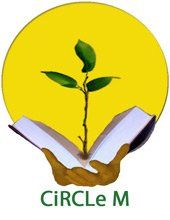Korean Artist Yun Ho Ye and His Wife by Joyce Sasse
Yun Ho Ye was a minister and an artist and his wife was a medical doctor. Both were outstanding in their fields of endeavor, and were recognized around the world for their work. (I got to know them while I lived in Seoul, Korea in 1968-1972.)
To visit them you had to drive into the very heart of the city – or maybe it could better be described as the “bowels” of the city. Here they were committed to working with the extremely poor.
- These were the people who carried heavy loads on their backs because they had no money with which to buy a cart.
- These were people who sold cigarettes and chewing gum by the piece, because they had no cash flow.
- These were people who dug scraps of plastic and cardboard home to make a roof, and then worried that even that would be bulldozed away by zealous city crews before the next night-fall.
- These were the people who raked through garbage carts for food to eat, or a stray glass bottle to sell, or a tiny ornament they might take home to a crying infant.
Of the poor in Korea, they were the poorest. Among them, of course, were the crippled, and the blind and the lame.
- In their midst was a small church with two attached rooms. One for the couple to live in, the other to serve as a medical clinic.
- The other thing I remember about the scene for the first time were the apartments blocks being built along the horizon – blocks for the middle class – and the bull dozers working to clear away the “rubble” that were these peoples’ homes.
I wondered how they could work when the odds were so stacked against them … But that was before I met them, and began to hear about their life and ministry.
When we arrived, we were ushered into their living room, for Dr. Ye was busy with patients at the dispensary, and the church was a beehive of activity with women making the special fall pickle known as “kimchi”.
- All around the living room there were paintings – 4 and 5 deep. These were no ordinary paintings such as might have been produced by an ambitious amateur artist.
- A few of Rev. Ye’s paintings were there, but there was also a Picasso, given to him by the artist … and a gallery of works by outstanding European and Asian artist!
- Most of this collection was not for sale – they were there, Mr. Ye explained, for the people to enjoy. “These people are not able, nor are they permitted to visit the Galleries in our city. Yet who needs the quiet healing that art can bring more than these? So, this is where our people can come.”
Yun Ho Ye is one of Asia’s noted artist.
- Through the sale of his art, and through the lectures he is invited to give, he is able to provide income for himself and his wife, and also provide cash to support her medical practice.
- Through his contacts with people beyond these slums, he fights for their rights and seeks money to enable them to purchase land that cannot be bulldozed whenever the City feels it is necessary to carry out another “beautification program”.
- In the foreground of one of Mr. Ye’s etchings is a gathering of men huddled together on a cold winter day. One has a leg missing, another has a bandaged arm, a third is obviously blind, another is sitting propped against the A-frame pack-board that he wears on his back to carry extra-heavy loads.
- On the cross-board of that A-frame the reference Luke 14 is written. These might have been the people Jesus was thinking of.
- In the background you can see the huge apartments complex, and the bulldozers, and the slum dwellings, and the families.
It was a privilege over the next few years to have repeated contact with Rev. Ye, and to listen to him talk about how he sought to live the Gospel. We talked at length about the philosophy behind his art. These were his people. They were important to him. They were important enough for him to want to draw them or paint their portraits.
- His were no idealistic pictures having to do with the noble poor. He painted them as they were. He gave them their dignity by showing them that they had worth in his eyes.
- What was more, then he wanted them to model for him, he paid them, as was right to anyone who was giving him of their time.
- In return, when they came to the Clinic, they were expected to pay something for the medication they needed (even if it was only a small portion of the actual cost).
- It is important to help his people regain their sense of dignity and pride, for that is essential to their health and well-being.
Second, it is important that he and his wife be with these people in the place where they are. That their lives are wrapped together, that together they can share of their joys and sorrows.
- Each contributes to the well-being of the other: the Ye’s through the Gallery, the Clinic and the Church … the people who are God’s children.
Third, they discovered that by working together, it is possible to make life a little easier.
- One Christmas, for example, Rev. Ye did a Christmas card that told of their plight. That card was sold throughout North America. The proceeds from that sale did buy them a bit of land, and a bit of peace away from the drone of the bulldozers.

